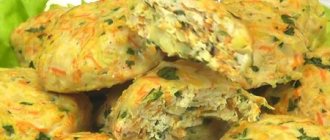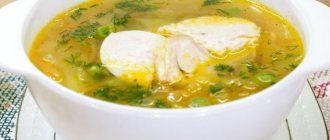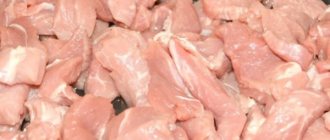Historical excursion
This dairy product has been produced for a long time. This type of cheese was bred to ensure that it retains its taste and shelf life for as long as possible. It took a lot of time to experiment with its recipe, but this culinary masterpiece was worth it!
Since then, Parmesan cheese has gained worldwide fame and appeared in all countries, changing its composition, recipe, production conditions, production time - anything but its name. The difference between this variety and other cheeses is its long-term storage. The calorie content of Parmesan cheese per 100 grams is 392 kilocalories.
For eight centuries, Italian cheesemakers made Parmesan according to strict cheese-making rules, and they were never violated. It is for these reasons that this cheese has such a unique taste and appearance. The cheese miracle was obtained as a result of 2 milkings from whole cow's milk, and the cows were fed with special herbs to give it a characteristic taste.
View gallery
Dutch classics: "Gouda" and "Old Amsterdam"
Dutch hard cheese "Gouda" with a soft creamy taste has been known since the 12th century. They say that Julius Caesar loved him very much, and Dutch sailors paid port taxes with gouda.
This cheese is made from unpasteurized milk - it is heated, a starter is added, and the resulting curd is washed well with water to remove lactic acid. This is why Gouda has such a delicate taste and pleasant aroma. Next, the cheese mass is placed in molds and placed under a press for several hours. After this, the cheese head is washed with saline solution and allowed to dry.
There are different varieties of Gouda, but the most elite is Old Amsterdam cheese, which was first created by a descendant of the Dutch cheese dynasty, Lambert Westland. He wanted to make cheese that both aristocrats and ordinary people - not gourmets - would love. And he succeeded; it is no coincidence that “Old Amsterdam” became the calling card of the country.
It is a mature cheese, and during the ripening process, white crystals and holes form in it, and the color becomes caramel. The uniqueness of this variety of Gouda lies in the fact that even the finished cheese, which is distinguished by its high density, retains its tenderness and oiliness. At the same time, it combines a spicy-salty taste and a sweet-nutty aroma.
In Holland, Old Amsterdam is served with unsweetened pears and apples, tart red grapes, pistachios and almonds. A plate with fresh bread, crackers, orange jam or fruit mustard is also placed on the table. The best wine for “Old Amsterdam” is young Bordeaux, Merlot and Cabernet.
Appearance and description of Parmesan
Parmigiano-reggiano, known in Russia as Parmesan, has a firm structure with a grainy, scaly appearance. It is characterized by a sweetish fruity taste and a rich yellow hue. Depending on the fat content of cow's milk, the calorie content of Parmesan cheese can vary in the range of 384-392 kcal.
Due to its structure, the cheese appears dry, brittle and hard in appearance, with slightly rounded edges. It is simply impossible to cut it like regular cheese. Therefore, especially for such cutting, there is a knife with a comfortable wooden handle and a sharp end. It is used to break off smaller pieces of cheese from a large piece of Parmesan.
View gallery
What to eat cheese with and where to use it
Real high-quality Parmesan has a rich taste, with hints of fruit and nuts. Due to its unusual structure and consistency, this specimen is used in many delicious and simple dishes. It can be grated finely and sprinkled on prepared salads, or baked in the oven, resulting in a beautiful golden crust.
Any pasta or pizza will be perfect with this cheese, and it is also a must-have addition to Italian risotto or classic soups. In addition, this product is used in the preparation of dough and all kinds of fillings. It allows you to thicken them naturally and give them an unforgettable taste.
Beneficial features
Parmigiano contains an abundance of macro- and microelements, as well as many vitamins. It contains: potassium, magnesium, calcium, phosphorus, sodium, copper, iron, manganese, selenium, zinc. Among the useful vitamins, we can note: vitamin A, K, D, B1, B2, E, PP (or B3), B5, B6, folic acid, choline, B12.
In addition to the average calorie content of Parmesan cheese, it has high nutritional value and is rich in natural protein and essential amino acids. Another feature of its physicochemical composition is the presence of two important acids: isovaleric and butyryl. The first acid works in the body as a sedative, it calms. And the second promotes the breakdown of fatty acids and stops the development of cancer cells in the colon.
All this indicates that this variety brings maximum benefits to the human diet.
View gallery
Among the disadvantages, it can be noted that Parmesan contains a lot of salt (monosodium glutamate), which affects the appearance of migraines (with a tendency to headaches) and affects the functioning of the kidneys, blood vessels, and heart. And also people prone to vascular diseases and prone to swelling should minimize the amount of cheese consumed. For healthy people, it is enough to follow the norm of consumption of this product.
Pear salad with parmesan
Parmesan adds zest to any salad, even if you use the simplest ingredients. Well, if the products are already unusual from the start, the dish can be served on a festive table.
Peel 2 pears, remove the core, cut it into thin slices or cubes. Use a vegetable peeler to shred 70 g Parmesan into thin slices.
Then place on a dish 100 g of well-washed arugula, pieces of pear and 50 g of any nuts - walnuts, pecans, cashews, almonds or hazelnuts. The nuts can be crushed a little.
Prepare sauce from 3 tbsp. l. olive oil, 1.5 tbsp. l. wine vinegar, 0.5 tsp. honey and Dijon mustard, add a little salt and black pepper.
Pour the sauce over the salad and sprinkle with 30 g of grated Parmesan. However, you can add more cheese. There is a belief among Italian chefs that you can’t ruin a dish with Parmesan!
How to use Parmigiano
This cheese is used in cooking in many ways. But real aesthetes prefer to taste this splendor in combination with red or white wine. It is customary to eat it in small pieces using a special knife. Thanks to the wine drink, the delicate fruity taste of the cheese is revealed in full force, and fresh grapes, walnuts or honey are a great addition to it. This type of serving is considered classic in European restaurants.
View gallery
Only true gourmets can truly appreciate the taste of a culinary masterpiece - Parmesan cheese - in combination with wine and its accompanying products.
Parmigiano in Italian
This dish is excellently prepared at the Parmigiano restaurant in Samara. Actually, it is called exactly the same - “Parmigiano”. This is Italian food made from eggplant and cheese, incredibly tasty and healthy!
Cut 3 eggplants into medium-thick slices, sprinkle with salt, leave for 15 minutes, then remove excess salt with a napkin. Fry the eggplants in olive oil and place the finished pieces on a paper towel to remove excess fat. Place the eggplants on a plate.
Cut 150 g of mozzarella and 200 g of tomatoes into thin slices, grate 100 g of Parmesan, chop a bunch of basil and 2 cloves of garlic, turn on the oven at 220 ° C. Place eggplant slices in the pan, mozzarella on top, then tomatoes, sprinkle with basil, garlic and Parmesan, add a little salt and pepper.
Energy value of cheese
Parmesan cheese has a calorie content per 100 g of 392 kcal (on average). The amount of protein is 35.75 g, fat - 25.83 g, carbohydrates - 3.22 grams.
If we take into account that this variety is a medium-calorie variety, it is very well absorbed by the body’s digestive system. What pleasantly sets it apart from other cheese varieties is the fact that Parmesan contains almost no cholesterol. It is also often used in the menu of dietary programs.
There is another type of Parmesan called gous (or Rokiskio). It is a low-calorie product. It is not as popular as classic Parmesan, but people who follow a healthy lifestyle use it in their dishes. This is due to the fact that the calorie content of goyus (Parmesan) cheese is only 354 kcal (per 100 grams).
Which cheese tastes better - Parmesan or Grana Padano?
Italian Grana Padano cheese is another popular cheese that successfully competes with Parmesan and is its closest “relative”. What are the differences between Granai cheese and Reggiano cheese? Parmigiano-Reggiano is strictly tied to geography and is produced in the Emilia-Romagna region, more precisely, in the provinces of Parma, Reggio Emilia, Modena and Bologna. Grano cheese is also produced only in specific areas - Lombardy, Piedmont, Trentino, Emilia-Romagna and Veneto.
When producing Parmigiano, the nutrition of the cows is very important - they should graze only on high-quality pastures in the cheese-making regions of Italy; this is not so important for obtaining grano.
Another difference between grana padano and parmesan is that padano cheese is produced twice a day only from fresh milk without adding yesterday's milk yield and its fat content is slightly higher. The milk is fermented with vegetable rennet or bacterial ferment, so Padano is suitable for vegetarians, unlike Parmesan, because it uses animal rennet.
In addition, no preservative additives are added to Parmesan, while Padano contains lysozyme, obtained from animal tissue.
As for the taste, Parmesan is sharper and richer because it ripens longer, while Padano is softer, more refined and more delicate. However, if you are not a cheese connoisseur, you will hardly be able to distinguish between these varieties.
Combination of cheese with Italian dishes
Many Italian housewives love to bake their dishes under a crispy crust of Parmesan cheese. They bread fish, meat, chicken with cheese and add it to all kinds of sauces. Its use is so extensive in Italian cuisine that it is difficult to imagine any dish without it. The cheese is used in grated form, sprinkling on pasta, salads, risotto, hot fish and meat dishes, as well as pizza. In some varieties of pizza, this cheese is the main ingredient, without which its preparation is simply unthinkable.
View gallery
The calorie content of dishes with Parmesan cheese, of course, increases. Well, how can we do without it? There are even some desserts that are served with this product. For example, fruit or cheese cookies. You will be impressed by this dessert - small pieces of Parmesan cheese covered in hot chocolate.
Parmesan does not contain artificial ingredients. The cheese has a spicy, rich taste. Thanks to all this, he was so loved by the Italians, and with them the rest of the world, so Parmesan can rightfully be considered a symbol of Italy. And the calorie content of hard Parmesan cheese (40%) allows it to be used by all adherents of a healthy diet, without exception.
History of Parmesan
The birthplace of hard Parmesan cheese is the Italian provinces of Parmigiano-Reggiano and Parma, hence its name - Parmigiano-Reggiano or Parmigiano.
No one knows exactly when this cheese appeared, but its history goes back centuries. He is mentioned in Boccaccio's Decameron. Remember how the author describes people living on a mountain of Parmesan cheese, eating only ravioli and spaghetti? At all times, Parmesan has been synonymous with prosperity and the sweet life... It is believed that the Benedictine monks were the first to prepare this cheese, since Parmesan is ideal for pilgrimage journeys, because it does not spoil for a long time on the road.
Real Parmesan is very rare, since Parma cheese has a special AOC certificate of authenticity. All other types of Parmesan cheese cannot bear this name, but this does not prevent manufacturers from other countries from breaking the rule. What are the differences between Parmigiano-Reggiano and Parma products and their Parmesan cheese counterparts?
Italians call the hardest cheese on the planet
, but it is better known as Parmesan. The French simplified the name of the cheese they liked and introduced it into the world of haute cuisine. Boccaccio wrote about Parmesan in The Decameron, and gourmet and writer Alexandre Dumas praised this cheese. The fame of the “king of cheeses” has reached the far corners of the world. Parmesan is mentioned in Gogol’s works, and the characters in Stevenson’s “Treasure Island” talk about it.
The first mention of a cheese so hard that it could only be split is found in ancient Roman chronicles. His recipe may have inspired the cheesemakers who began producing Parmesan in the small town of Bibbiano. This happened in the 11th century, but less than a few decades later, caselli - the largest monasteries and castles in the vicinity of Parma and Reggio began to acquire cheese factories.
The province, which had long been famous for dairy cattle breeding, supplied the whole country with fresh products, but the peasants were unable to sell all the milk produced. The monks thought that cheese making would be a good way out of the situation and they were not mistaken. Cheese production began in the monastery of St. John in Parma and in the monastery of St. Prosper in Reggio.
To get a kilogram of cheese, both in those years and today, about 15 liters of fresh milk are required. Italians are sensitive to the quality of the product they produce, so in production they use milk obtained only from red Reggiana cows. As in the early days of Italian cheesemaking, the animals are fed lush grass, hay and alfalfa, without adding any synthetic substances or antibiotics to the diet. In modern cheese production, little has changed, only quality control has increased and technology has improved.
However, it turned out that the popularity of Parmesan is not only a blessing, but also a problem. Since similar cheese has been made for many years in almost all provinces of Italy, and recently all over the world, the question inevitably arose: “What is the real Parmesan?”
The country's special "Consortium" on standards decided in 1955 that the original Parmesan is Parmigiano-Reggiano, produced only in the historical regions of Parma and Reggio. Other high-quality types of Italian cheese with a similar recipe are now commonly called Grana Padano.
Storing cheese at home
Parmigiana can be stored in the refrigerator for several months (up to six months), and even longer in the freezer.
When storing, it is important to consider the packaging of the cheese. It must be removed from the original packaging, since it will most likely be plastic or polyethylene. And this material negatively affects cheese enzymes. Therefore, you can take parchment or wax paper and wrap the Parmesan in it. You also need to wrap it in foil on top. Such multilayer packaging will preserve the shelf life of the product in a place where the temperature will not exceed six degrees Celsius. To avoid having to worry about dating later, indicate the expiration date or date of purchase on the package.
Once opened, Parmesan can be stored in the refrigerator for up to one week.
Parmesan cheese production
So, what kind of cheese is called Parmesan? This product is prepared from the freshest milk and sourdough. Usually, the top layer of settled milk from the evening milking is added to the morning fresh milk and only then it is fermented. Next, the liquid is heated, rennet is added and allowed to brew. Curdled milk forms a curd of cheese, which must be crushed with a knife into small pieces the size of grains of rice.
But the cooking process does not end there. After pressing, the cheese is aged for up to 25 days in a salt solution, then lies on shelves in a room where constant temperature and humidity are maintained for a whole year. Every week the cheese heads are wiped and turned over.
Experienced experts tap the cheese with a silver hammer to determine the presence of internal cracks and voids. In Italy, such cheese is labeled in a special way and is sold cheaper than high-quality Parmesan.











